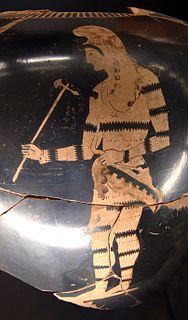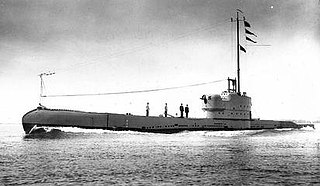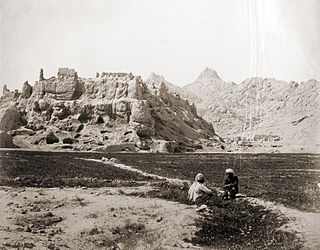
Marcus Antonius, commonly known in English as Mark Antony or Anthony, was a Roman politician and general who played a critical role in the transformation of the Roman Republic from a constitutional republic into the autocratic Roman Empire.

Legio III Cyrenaica, was a legion of the Imperial Roman army. The legion had its origins among the forces of Mark Antony during the civil wars of late first century BC. In the Imperial period it was stationed in Egypt, where it played a key role in campaigns against the Nubians and Jews. In the first century AD, it was usually located in Arabia Petraea. There are still records of the legion in Syria at the beginning of the 5th century. The legion symbol is unknown.

The University of South Australia (UniSA) is a public research university in the Australian state of South Australia. It is a founding member of the Australian Technology Network of universities, and is the largest university in South Australia with approximately 32,000 students.

Indo-Scythians were a group of nomadic Iranian peoples of Saka and Scythian origin who migrated from Central Asia southward into western and northern and western South Asia from the middle of the 2nd century BCE to the 4th century CE.

Arachosia is the Hellenized name of an ancient satrapy in the eastern part of the Achaemenid, Seleucid, Parthian, Greco-Bactrian, and Indo-Scythian empires. Arachosia was centred on the Arghandab valley in modern-day southern Afghanistan, although its influence extended east to as far as the Indus River. The main river of Arachosia was called Arachōtós, now known as the Arghandab River, a tributary of the Helmand River. The Greek term "Arachosia" corresponds to the Aryan land of Harauti which was around modern-day Helmand. The Arachosian capital or metropolis was called Alexandria Arachosia or Alexandropolis and lay in what is today Kandahar in Afghanistan. Arachosia was a part of the region of ancient Ariana.

The sagaris is an ancient Iranian shafted weapon used by the horse-riding ancient Saka and Scythian peoples of the great Eurasian steppe. It was used also by Western and Central Asian peoples: the Medes, Persians, Parthians, Indo-Saka, Kushans, Mossynoeci, and others living within the milieu of Iranian peoples. According to Aristarchus of Samothrace, the legendary Amazons used the sagaris, as well. In The Histories, Herodotus attributes the sagaris to the Sacae Scythians in the army-list of Xerxes the Great.

Alexandria Union Station is a historic railroad station in Alexandria, Virginia, south of Washington, D.C. To avoid confusion with nearby Washington Union Station, the station is often referred to as simply Alexandria. Its Amtrak code is ALX.

Margiana is a historical region centred on the oasis of Merv and was a minor satrapy within the Achaemenid satrapy of Bactria, and a province within its successors, the Seleucid, Parthian and Sasanian empires.
Zarinaea, also referred to as Zaranya and Zarina was a Sacae woman ruler, the sister of Cyraedus, and the wife of Marmares, ruler of the Parthians. Zarina was the "czarina" of the city which was located on the shoreline of the river of Syr Darya, nearby the city of Sighnaq. She was noted for her beauty, wisdom, and her bravery, as Sacae women went into the field with men. According to the Sacaen rules, when the girl turned 13 she was taught the archery and hunt. When the war broke out between the Medians and the Parthians and Sacae, she fought in battle and was wounded. Ctesias related her story towards the end of the 5th century B.C.E. Ctesias described the love story of Zarinaea and the Mede prince Stryangaeus. However, Zarinaea and Stryanaeus could not be together despite their mutual feelings.
Once upon a time, Zarinaea went for a hunt but there were no any animals to hunt due to the numerous wars between people, so she had to move to another territory to find fowl. Unfortunately, the queen had come across a large enemy troop and they had started to chase after her and finally, they injured the leg of Zarinaea. The fast horse of the prince of the Medes overtook the tsarina and wanted to kill her when he noticed the long hair getting out of the helmet. So, he fell in love with the leader of the Sacae and took her back to her people. After this deed, Zarinaea and Stryangaeus decided to meet during the hunts. Their friendship and feelings led to the peace between two states. Once, when the prince came to the meeting with Zarinaea, Marmares brought him to Roksanaki. The queen of the Sacae ordered to stop Marmares because she protected Stryanghaeus as her husband Marmares attempted to kill the prince of the Medes. The Medes' leader proposed her to unite the nations of the Sacae and the Medes, the queen asked him to meet in one year and only then she would be able to give him the answer. However, after this incident the tsarina of the tribe rejected Stryangaeus' offer because she preferred the independence of her people rather than her personal feelings. Therefore, Zarinaea stopped the war between two nations. Stryangaeus suffered but accepted her will.

Aria is an Achaemenid region centered on the city of Herat in present-day western Afghanistan. In classical sources, Aria has been several times confused with the greater region of ancient Ariana, of which Aria formed a part.

Charax Spasinu, also called Charax Spasinou, Charax Pasinu, Spasinu Charax, Alexandria or Antiochia in Susiana, was an ancient port at the head of the Persian Gulf, and the capital of the ancient kingdom of Characene.

HMS Parthian was the lead boat of the six Royal Navy Parthian-class submarines, all launched in 1929. The submarine was sunk in 1943 during the Second World War. The submarine was nicknamed Peanut, from the identity letters PN painted on the fin.

The first of many Alexandrias in the Far East of the Macedonian Empire, Alexandria in Ariana was a city in what is now Afghanistan, one of the twenty-plus cities founded or renamed by Alexander the Great. The third largest Afghan city, Herat, is the city's modern name.

Alexandria in Arachosia was a city in ancient times that is now called Kandahar in Afghanistan. It was one of more than seventy cities founded or renamed by Alexander the Great. It was founded around 330 BC, on the foundations of an earlier Achaemenid fortress. Arachosia is the Greek name of an ancient province of the Achaemenid, Seleucid and Parthian empires. The province of Arachosia was centered around the Argandab valley in Kandahar. It did not reach the Hindu Kush, but it apparently extended east as far as the Indus river, although its exact extents are not yet clear.

Alexandria is an independent city in the Commonwealth of Virginia in the United States. As of 2010, the population was 139,988, and in 2020, the population was estimated to be at 159,200. The city's estimated population has grown by 1% percent annually since 2010 on average. Located along the western bank of the Potomac River, Alexandria is approximately 7 miles (11 km) south of downtown Washington, D.C.

Alexandria Prophthasia also known as Alexandria in Drangiana was one of the seventy-plus cities founded or renamed by Alexander the Great. The town was founded during an intermediate stop between Herat, the location of another of Alexander's fortresses, and Kandahar.

The Greco-Bactrian Kingdom was, along with the Indo-Greek Kingdom, the easternmost part of the Hellenistic world, covering Bactria and Sogdiana in Central Asia from 256 to 125 BC. It was centered on the north of present-day Afghanistan. The expansion of the Greco-Bactrians into present-day eastern Afghanistan and Pakistan from 180 BC established the Indo-Greek Kingdom, which was to last until around AD 10.

HMS Phoenix was a Parthian-class submarine of the Royal Navy, launched in 1929. She was the eighteenth warship of the Royal Navy to use the name Phoenix. She served on the China Station from her commissioning until the start of the Second World War. Phoenix was then relocated to the Mediterranean Sea and was sunk by the Italian torpedo boat Albatros on 16 July 1940.

Old Kandahar is a historical section of the city of Kandahar in southern Afghanistan. It is thought its foundation was laid out by Alexander the Great in 330 BC under the name Alexandria Arachosia. and served as the local seat of power for many rulers in the last 2,000 years. It became part of many empires, including the Mauryans, Indo-Scythians, Sassanids, Arabs, Zunbils, Saffarids, Ghaznavids, Ghorids, Timurids, Mughals, Safavids, and others. It was one of the main cities of Arachosia, a historical region sitting in Greater Iran's southeastern lands and was also in contact with the Indus Valley Civilization. The city has been a frequent target for conquest because of its strategic location in Southern Asia and Central Asia, controlling the main trade route linking the Indian subcontinent with the Middle East, the rest of Central Asia and the Persian Gulf.

















